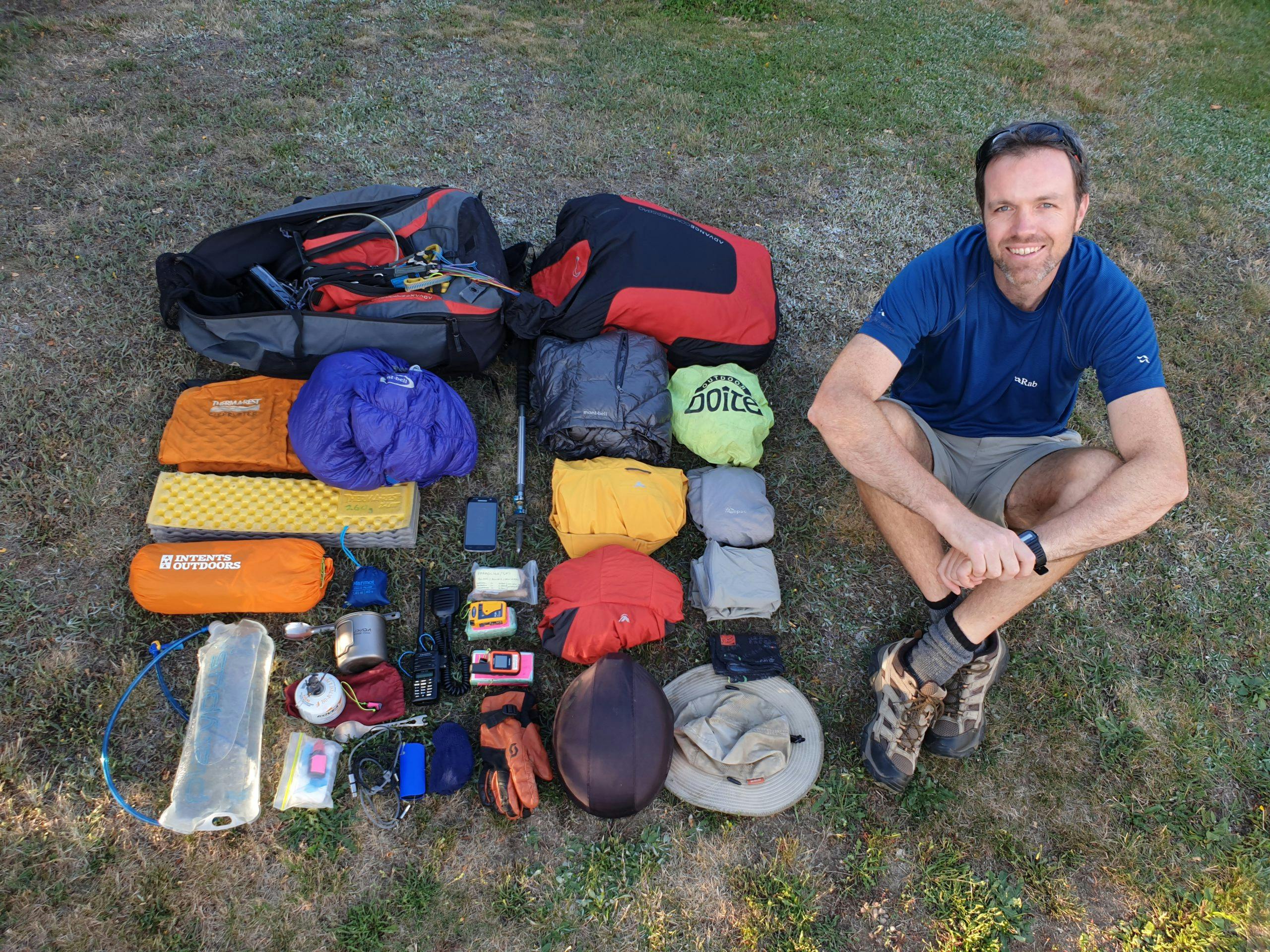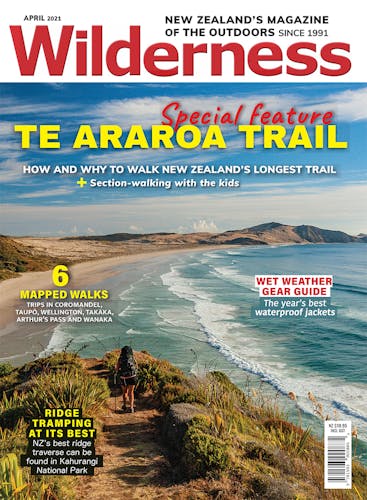Dan Clearwater likes to wait for perfect weather, then tramp into high huts or campsites. If time is short, he paraglides down at dawn, or if he’s got a whole day ahead of him he’ll hike even higher to catch the midday thermals and fly all the way back to his car or beyond.
Here’s what he takes for an overnight paragliding trip.
Camping gear
Two three-quarter Therm-A-Rest mats (Prolite inflatable and Z-Lite closed-cell foam); the combination is heavier than an ultralight inflatable mat, but the Z-lite is indestructible. I use a 500g Montbell Downhugger sleeping bag, Intents Outdoors bivy tent and Marmot Stratos inflatable pillow.
Paraglider and harness
Advance Easiness 2 harness which includes a reserve parachute. The harness reverses to become an 80-litre pack, but most of the space is taken up by my paraglider. I fly an Ozone Geo 5, which is a semi-light beginner’s cross-country paraglider. A Doite 100L pack cover protects the expensive harness from abrasion and water. A K2 route ski helmet protects my noggin. My paraglider and harness kit totals 9.3kg.
Cooking and hydration
A 100g gas canister fits snuggly within my 650ml titanium mug, which I also use with a Kovea stove to boil the 500ml needed for a freeze-dry meal. I use a flint to light my stove – it’s more reliable than matches or a lighter. In the Queenstown-Lakes district where I live, there’s lots of open, dry country, which means thirsty climbs with a heavy pack so I use a 3l Platypus reservoir.
Electronics
I use a Garmin InReach satellite tracker when I’m flying; on a good day you can cover 20km/h by paraglider, but you’re never certain in advance which direction you’re going to go or where you’ll end up. I also carry an Ocean Signal RescueMe PLB. The InReach is great for routine communications, but the battery can run out and the PLB sends its signal via different networks, so I think it’s wise to carry both. A Yaesu airband VHF radio allows me
to communicate with other air traffic for safety. My phone becomes my flying instrument: speed, height, direction, and camera/torch/map. A small power bank is handy to keep things juiced up.
Clothing
It can get quite cold when paragliding, so I wear all my layers at night to compensate for my lightweight sleeping bag. Montbell Ultralight down jacket, Macpac Polartec Alpha fleece and Fitzroy softshell. Earth Sea Sky zip-off trousers. A Shelta Sunhat, plus a Buff for sun protection when hiking and as a balaclava for flying. Cheapie polypro gloves used with my Scott ski touring gloves are a versatile combo.








